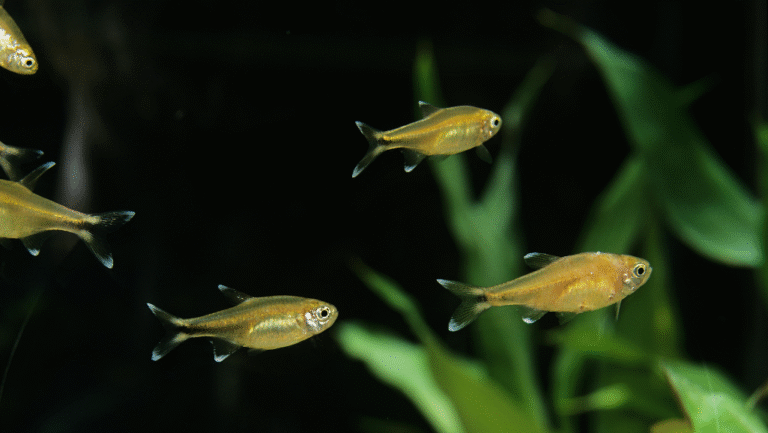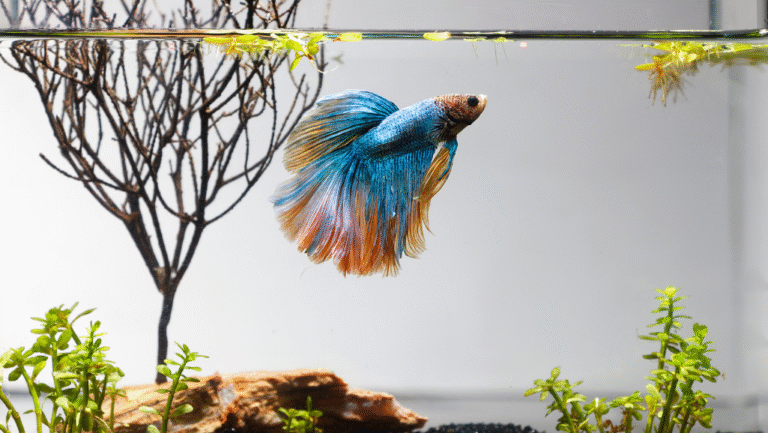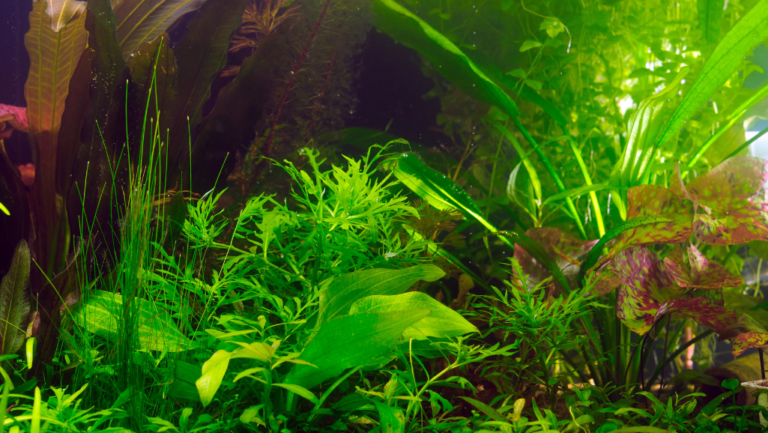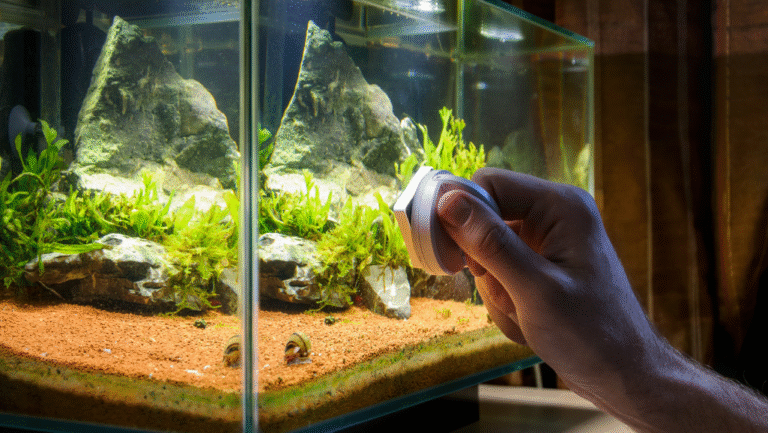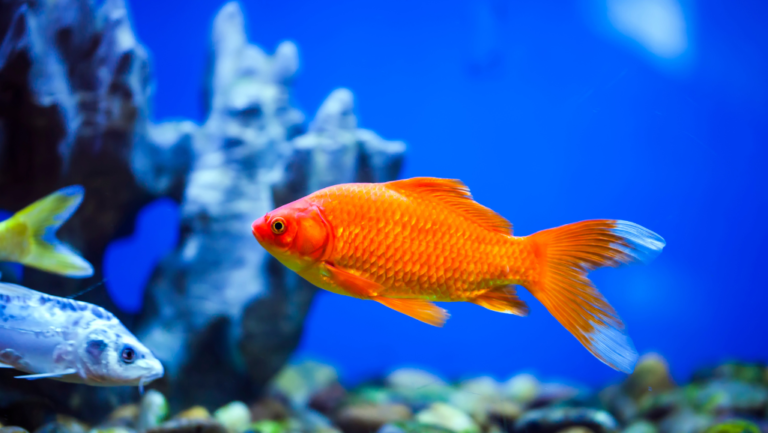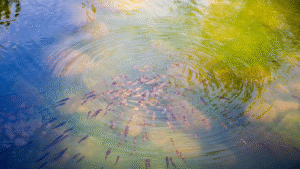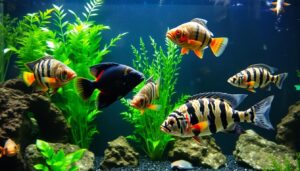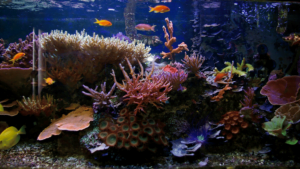Maintaining a healthy aquarium can be challenging, especially when dealing with unwanted growths like hair algae. This common issue often signals imbalances in your tank’s ecosystem, such as excess nutrients or improper lighting. Understanding the root causes is the first step toward effective control.
Hair algae thrive in environments with high levels of nitrates and phosphates. These nutrients can accumulate from overfeeding or inadequate water changes. A well-balanced aquarium requires regular maintenance, proper lighting, and careful monitoring of water parameters.
This guide covers essential tips and solutions to help you manage and prevent hair algae. From basic practices like water changes to advanced strategies like CO2 injection, you’ll find actionable advice tailored for both beginners and experienced aquarists. Let’s dive in and restore your tank’s beauty!
Key Takeaways
- Hair algae often indicate nutrient imbalances in your aquarium.
- Regular water changes and substrate cleaning are crucial for prevention.
- Proper lighting and CO2 levels support plant growth and reduce algae.
- Introducing algae-eating species can help control outbreaks.
- Testing water parameters ensures a balanced and healthy tank.
Introduction to Aquarium Hair Algae Challenges
Dealing with unwanted growth in your tank can be frustrating, especially during the cycling phase. Many aquarists face this problem when setting up a new aquarium. Nutrient imbalances, such as high nitrate levels, often trigger these outbreaks.
During the initial cycling phase, your tank is more susceptible to rapid growth. This is because beneficial bacteria are still establishing themselves, and water parameters can fluctuate. Over time, these issues tend to resolve as the tank stabilizes.
Unwanted growth not only affects the aesthetics of your tank but also competes with plants for resources. This can lead to weaker plant health and an unbalanced ecosystem. Regular maintenance, such as water changes and substrate cleaning, is essential to prevent these problems.
Nitrate accumulation is a common culprit behind these challenges. Excess nutrients from overfeeding or inadequate water changes can fuel rapid growth. By monitoring water quality and addressing imbalances early, you can maintain a healthier tank.
This article will explore these challenges in detail and provide practical solutions to help you manage and prevent unwanted growth. From nutrient control to proper maintenance routines, you’ll find actionable tips to restore your tank’s balance.
Understanding Hair Algae: What It Is and How It Spreads
Filamentous growths in aquariums can quickly overwhelm plants and disrupt balance. These growths, often referred to as hair algae, are a type of green algae with a thread-like structure. They belong to the Oedogonium genus and can smother plants if left unchecked.
Their biological makeup allows them to thrive in environments with excess nutrients, particularly nitrates and phosphates. These substances accumulate from overfeeding or inadequate water changes, creating ideal conditions for rapid spread.
Light plays a significant role in their growth. Too much or too little light can trigger outbreaks. Proper lighting duration, typically 8 to 10 hours daily, helps maintain balance and supports healthy plant growth.
There are two main types of filamentous growths: softer filaments and bristle-like ones. Softer types are often consumed by invertebrates, while bristle-like types are more resilient and harder to manage.
Understanding their biology is key to implementing effective control measures. By addressing nutrient imbalances, optimizing light, and maintaining water quality, you can prevent their spread.
The design of your aquarium system also influences their growth. A well-balanced system with proper filtration and flow reduces the likelihood of outbreaks. Regular maintenance, such as water changes and substrate cleaning, is essential for long-term control.
Common Causes of Hair Algae in Aquariums
Aquarium enthusiasts often face challenges with unwanted growths that disrupt tank balance. These issues are frequently linked to imbalances in nutrient levels, water quality, and lighting conditions. Identifying and addressing these factors is essential for maintaining a healthy aquarium environment.
Nutrient Imbalance and Water Quality Issues
Excess phosphates and nitrates are primary contributors to unwanted growths. These substances often accumulate due to overfeeding or infrequent water changes. Poor circulation can also exacerbate the problem, creating stagnant areas where nutrients build up.
Regularly testing your water parameters is crucial. Tools like test kits help monitor nitrate and phosphate levels, allowing you to address imbalances before they become severe. Consistent maintenance, such as weekly water changes, can prevent these issues from arising.
Lighting and CO2 Factors
Light plays a significant role in aquarium health. Too much or too little light can trigger unwanted growths. Aim for a lighting duration of 8 to 10 hours per day to maintain balance. Excessive intensity can also create favorable conditions for these issues.
CO2 levels are equally important. Inadequate CO2 can stress plants, making them more susceptible to competition from unwanted growths. Ensuring proper CO2 supplementation supports healthy plant growth and reduces the risk of outbreaks.
By addressing these factors, you can create a stable environment that minimizes the risk of unwanted growths. Regular monitoring and adjustments are key to long-term success.
The Role of Nutrients: Phosphate, Nitrate, and More
Balancing nutrients in your aquarium is essential for preventing unwanted growth and maintaining a healthy ecosystem. Key elements like phosphate and nitrate play a significant role in plant health and water quality. When these nutrients are out of balance, they can fuel rapid growth of unwanted organisms.
Importance of a Balanced NPK Regimen
An NPK regimen, which stands for nitrogen, phosphorus (phosphate), and potassium, is crucial for aquarium health. Nitrogen supports plant growth, while phosphorus aids in energy transfer. Potassium helps with overall plant resilience. Maintaining the right balance ensures your plants thrive and outcompete unwanted growth.
Ideal nitrate levels should be between 0.5 to 1.0 ppm, while phosphate levels should stay within 0.1 to 0.2 ppm. Exceeding these ranges can lead to nutrient imbalances, creating an environment where unwanted organisms flourish.
“A well-balanced NPK regimen is the foundation of a healthy aquarium. It not only supports plant growth but also prevents nutrient-driven issues.”
Impact of Regular Water Changes
Performing regular water changes is one of the most effective ways to control nutrient levels. By replacing 20% of the water twice a week, you can flush out excess phosphate and nitrate. This practice also removes organic waste that contributes to nutrient buildup.
Consistency is key. Skipping water changes can lead to spikes in nutrient levels, making it harder to maintain balance. Regular maintenance ensures a stable environment, reducing the risk of unwanted growth.
By managing nutrients effectively and sticking to a routine, you can create a thriving aquarium that’s both beautiful and healthy. Small, consistent efforts go a long way in maintaining balance and preventing issues.
Implementing Regular Water Changes for a Healthier Tank
One of the most effective ways to maintain a healthy tank is through regular water changes. This simple yet crucial process helps remove excess nutrients, ensuring a balanced environment for your aquatic life.
Exchanging about 50% of your tank’s water weekly is highly recommended. This change prevents the buildup of nitrates and phosphates, which can fuel unwanted growth. Consistent maintenance keeps your tank clean and stable.
Here’s how regular water changes improve your aquarium:
- They reduce harmful substances like ammonia and nitrites.
- They replenish essential minerals for fish and plants.
- They maintain optimal pH levels for a healthy ecosystem.
To perform an effective water change, follow these steps:
- Use a siphon to remove old water and debris from the substrate.
- Replace it with dechlorinated water at the same temperature.
- Test water parameters afterward to ensure balance.
“Consistent water changes are the backbone of aquarium health. They prevent nutrient imbalances and create a thriving environment.”
For busy aquarists, scheduling water changes can be challenging. Set reminders or perform smaller changes twice a week to stay on track. Consistency is key to long-term success.
By incorporating regular water changes into your routine, you’ll see a noticeable improvement in your tank’s health. This process not only prevents issues but also enhances the overall beauty of your aquarium.
Light Management and Optimizing Aquarium Setup
Proper lighting is a cornerstone of a thriving aquarium, influencing both plant health and water quality. Too much or too little light can disrupt the balance, leading to unwanted growth. By optimizing your setup, you can create an environment where plants flourish and outcompete potential issues.
Adjusting Lighting Duration and Intensity
The duration and intensity of light play a critical role in aquarium health. For new tanks, start with 6 hours of light per day, increasing by 30 minutes weekly. Established systems typically thrive with 8 to 10 hours daily.
High-intensity light can promote rapid plant growth but may also encourage unwanted organisms. Use a timer to maintain consistent cycles, ensuring your tank receives the right amount of light without overexposure.
Supporting Healthy Plant Growth
Robust plant growth is essential for maintaining balance. Fast-growing plants absorb excess nutrients, reducing the resources available for unwanted growth. Ensure your plants receive adequate CO2 and nutrients to thrive.
Regularly test your water parameters to monitor clarity and nutrient levels. This helps you make informed adjustments to light and other factors. Proper flow also ensures even distribution of light and nutrients, supporting a healthy ecosystem.
“Balancing light and nutrients is key to a thriving aquarium. Consistent monitoring and adjustments prevent imbalances and promote plant health.”
By managing light effectively and supporting plant growth, you can create a beautiful and balanced aquarium. Small, consistent efforts go a long way in maintaining a healthy environment.
Utilizing a Biological Approach: Algae Eaters and Cleanup Crews
Incorporating natural solutions into your aquarium can effectively manage unwanted growths. A biological approach, using live organisms, offers a sustainable and efficient way to restore balance. By introducing a dedicated cleanup crew, you can maintain a healthier tank while reducing the need for chemical interventions.
Species like Amano shrimp, dwarf shrimp, and various snails are proven to be effective in controlling detritus and sweeping away unwanted growth. These organisms not only consume excess nutrients but also help stabilize the ecosystem. For example, Amano shrimp are known for their ability to consume hair algae, making them a popular choice among aquarists.
Selecting Amano Shrimp, Dwarf Shrimp, and Snails
Amano shrimp are particularly effective in larger tanks, with a recommended ratio of one shrimp per 10 liters of water. Dwarf shrimp, such as Neocaridina davidi, thrive in groups of 10 or more and contribute to maintaining water clarity. Snails, including ramshorn and nerite varieties, are excellent at cleaning surfaces and reducing nutrient buildup.
These species are compatible with reef tanks and require minimal maintenance. However, it’s important to select the right organisms for your specific setup. For instance, some snails, like nerites, are more efficient at algae removal, while others, like ramshorn snails, are more robust and colorful.
Supplementing with Hermit Crabs and Other Cleanup Crew
Hermit crabs and other invertebrates can complement your cleanup crew by targeting areas that shrimp and snails might miss. These organisms help reduce detritus and prevent nutrient spikes, which can fuel unwanted growth. By diversifying your crew, you create a more balanced and resilient ecosystem.
“A well-chosen cleanup crew not only controls algae but also enhances the overall health and beauty of your aquarium.”
When selecting species, consider their compatibility with your tank’s inhabitants and conditions. For example, some hermit crabs may disturb corals, while others are reef-safe. By carefully planning your crew, you can achieve long-term success in maintaining a clean and thriving aquarium.
Chemical and Mechanical Control Methods for Hair Algae
When biological methods fall short, chemical and mechanical solutions can help restore balance in your aquarium. These approaches are often used as last-resort measures when other strategies, like nutrient management and biological control, fail to address persistent issues.
Hydrogen Peroxide and Black-Out Treatments
Hydrogen peroxide is a popular chemical treatment for severe outbreaks. It works by breaking down unwanted growths at the cellular level. To use it safely, dilute the solution and apply it directly to affected areas. Always follow dosage instructions to avoid harming your tank’s inhabitants.
Black-out treatments involve completely blocking light for 48 to 72 hours. This process disrupts photosynthesis, effectively starving the problem. After the treatment, reintroduce light gradually to prevent shock to your plants and fish.
Effective Use of Algicides and Skimmers
Algicides are another option for tackling stubborn issues. These chemicals target specific organisms but must be used cautiously. Always choose reef-safe products and follow manufacturer guidelines to avoid harming beneficial species.
Mechanical methods, like using a skimmer, can also be highly effective. A skimmer removes organic waste and excess nutrients from the water, reducing the resources available for unwanted growth. Proper setup and maintenance of your skimmer are essential for optimal performance.
“Chemical and mechanical methods should complement, not replace, regular maintenance. They are most effective when used alongside improved water quality and nutrient control.”
Reducing phosphate levels is another critical step. Chemical treatments like phosphate removers can help, but they should be part of a broader strategy that includes regular water changes and monitoring. For more tips on maintaining optimal water quality, check out this guide on aquarium water maintenance.
While chemical and mechanical methods offer quick results, they should be used sparingly. Over-reliance on these treatments can disrupt your tank’s ecosystem. Always prioritize biological control and preventive measures for long-term success.
Case Study: Successful Hair Algae Control in a Reef Tank
A well-maintained reef tank can face unexpected challenges, particularly when dealing with persistent growths. This case study highlights a real-life example where strategic adjustments restored balance and health to a troubled system.
Observations from Real-Life Experiences
The reef tank in question initially struggled with excessive growth due to detritus buildup on rock surfaces. Over time, this led to nutrient imbalances, creating an environment where unwanted organisms thrived. Regular observation revealed that water changes were insufficient to address the issue.
Key observations included:
- High levels of detritus trapped in the rock structure.
- Inadequate flow, allowing stagnant areas to form.
- Inconsistent maintenance routines, leading to nutrient spikes.
Adjusting Maintenance and Filtration Strategies
To combat the problem, the aquarist implemented several changes. First, they increased the frequency of water changes to twice a week, ensuring excess nutrients were removed. Additionally, they upgraded their skimmer to improve organic waste removal.
Specific adjustments included:
- Cleaning rock surfaces thoroughly to remove detritus.
- Enhancing flow with strategically placed powerheads.
- Monitoring saltwater quality weekly to track improvements.
“Consistent observation and proactive adjustments are key to maintaining a healthy reef tank. Small changes can yield significant results over time.”
Over several weeks, these efforts led to a noticeable reduction in unwanted growth. The tank’s inhabitants, including corals and fish, showed improved health and vitality. This case study underscores the importance of regular maintenance and tailored filtration strategies in achieving a balanced reef tank.
Advanced Techniques: Phosphate Reactors and Nutrient Removal
Advanced filtration methods can transform your aquarium’s health by targeting nutrient imbalances. These techniques are particularly effective for experienced aquarists dealing with persistent issues in complex setups. By focusing on phosphate and nitrate removal, you can restore balance and prevent unwanted growth.
Utilizing Poly-Filter Pads and Denitrators
Phosphate reactors are specialized tools designed to remove excess phosphate from your aquarium. They work by circulating water through a media that binds to phosphate, effectively reducing its concentration. This process is crucial for maintaining a healthy system and preventing nutrient-driven problems.
Poly-Filter Pads are another advanced solution. These pads absorb both phosphate and nitrate, making them a versatile addition to your filtration setup. Regular replacement ensures optimal performance and consistent nutrient control.
Denitrators, on the other hand, target nitrate through anaerobic processes. These devices create an oxygen-free environment where beneficial bacteria break down nitrate into harmless nitrogen gas. Integrating denitrators into your system can significantly lower nitrate levels.
Designing Systems for Optimal Nutrient Removal
To maximize the effectiveness of these tools, proper system design is essential. Ensure adequate flow and placement of reactors and pads for even nutrient distribution. Regular testing of water parameters helps monitor progress and adjust strategies as needed.
“Advanced filtration techniques are most effective when combined with regular maintenance and monitoring. They provide a targeted approach to nutrient control.”
Here are actionable steps to integrate these components:
- Install a phosphate reactor and fill it with appropriate media.
- Add Poly-Filter Pads to your filtration setup and replace them every 2-4 weeks.
- Incorporate a denitrator to address nitrate levels in larger tanks.
- Test water parameters weekly to ensure optimal performance.
By implementing these advanced techniques, you can achieve a balanced and thriving aquarium. These methods are particularly suited for experienced aquarists with complex setups, offering long-term solutions for nutrient management.
DIY Solutions for Rock Cooking and Detritus Management
Preparing your aquarium rocks and managing detritus are essential steps for maintaining a clean and balanced tank environment. Proper preparation ensures that your rock and sand bed remain free from excess nutrients, which can lead to unwanted issues. This section provides practical DIY solutions to help you achieve a healthier aquarium.
Step-by-Step Guide to Cooking Base Rock
Cooking base rock is a process that removes internal phosphates, preventing nutrient buildup in your tank. Here’s how to do it:
- Place the rock in a large container filled with saltwater.
- Ensure the water covers the rock completely and maintain a stable temperature.
- Change the water every few days to flush out released phosphates.
- Use a powerhead or air stone to maintain water circulation.
- Monitor phosphate levels with a test kit until they stabilize.
This process can take several weeks but is highly effective in creating a cleaner environment for your tank.
Maintaining a Clean Sand Bed
A clean sand bed is crucial for reducing detritus accumulation. Here are some tips to keep it pristine:
- Use a gravel vacuum during water changes to remove debris from the sand.
- Introduce sand-sifting organisms like snails or gobies to help keep the sand bed clean.
- Stir the sand gently to prevent anaerobic pockets from forming.
Daily maintenance routines, such as “blowing” off rock surfaces with a turkey baster, also support long-term tank health.
“Proper preparation of live rock and regular cleaning of the sand bed are foundational practices for a thriving aquarium.”
For more tips on maintaining a healthy tank, check out our guide on aquarium care and maintenance. By following these DIY solutions, you can create a cleaner, more balanced environment for your aquatic life.
Enhancing Aquarium Flow and Filtration Systems
Effective water movement is crucial for maintaining a clean and balanced aquarium environment. Without proper flow, detritus can settle, leading to nutrient buildup and poor skimmer performance. Optimizing your system ensures that debris remains suspended, making it easier for filtration to do its job.
Inadequate flow often creates stagnant areas where waste accumulates. This not only affects water quality but also encourages unwanted growth. By enhancing circulation, you can prevent these issues and maintain a healthier tank.
Optimizing Powerhead Placement
Powerheads play a vital role in improving water movement. Proper placement ensures even distribution of flow, reaching every corner of your tank. Here’s how to optimize their setup:
- Position powerheads to create a circular current, preventing dead spots.
- Angle them slightly upward to improve surface agitation and oxygen exchange.
- Adjust the flow rate based on your tank size and inhabitants’ needs.
These adjustments enhance filtration efficiency and reduce the risk of algae “hot spots.” Even minor changes can significantly impact your tank’s cleanliness.
Techniques for Maximizing Circulation
To achieve optimal flow, consider the following techniques:
- Use multiple powerheads in larger tanks for better coverage.
- Regularly clean powerheads to maintain their performance.
- Monitor water movement using floating objects to identify weak areas.
Improved circulation not only keeps detritus suspended but also supports the health of your tank’s inhabitants. It ensures that nutrients are evenly distributed, benefiting both plants and fish.
“Proper flow is the backbone of a healthy aquarium. It prevents waste buildup and supports a thriving ecosystem.”
Checklist for Evaluating Water Flow
Here’s a quick checklist to assess and improve your tank’s flow:
- Check for dead spots by observing debris accumulation.
- Test powerhead placement and adjust angles as needed.
- Ensure surface agitation for proper oxygen exchange.
- Clean filters and powerheads regularly to maintain efficiency.
By following these steps, you can create a balanced and clean environment for your aquarium. Consistent maintenance and adjustments are key to long-term success.
Balancing Feeding Practices for Optimal Water Quality
The way you feed your aquarium inhabitants plays a crucial role in preventing nutrient imbalances. Overfeeding or improper feeding techniques can lead to excess food and detritus, which negatively impact water quality. By adopting a balanced approach, you can maintain a healthier tank and reduce the risk of unwanted issues.
Target Feeding versus Broadcast Feeding
Target feeding involves delivering food directly to specific fish or areas, minimizing waste. This method ensures that food is consumed before it can decompose and release excess nutrients. In contrast, broadcast feeding spreads food across the entire tank, which often leads to uneaten food settling in hard-to-reach areas.
Broadcast feeding can contribute to nutrient overload, especially in larger tanks. Uneaten food breaks down, releasing nitrates and phosphates that fuel unwanted growth. Target feeding, on the other hand, helps maintain cleaner water and reduces the need for frequent changes.
Practical Tips for Balanced Feeding
Here are some actionable steps to improve your feeding routine:
- Use tools like turkey basters to deliver food precisely to bottom-dwelling fish.
- Monitor portion sizes to ensure your fish consume all the food within a few minutes.
- Clean up uneaten food promptly to prevent it from decomposing.
High-quality fish food with low ash content (below 8-10%) produces less waste, further supporting water quality. By reducing leftover food, you minimize the risk of nutrient spikes and maintain a cleaner tank.
“A balanced feeding routine not only keeps your fish healthy but also supports the overall ecosystem of your aquarium.”
Impact on Plant Health
Proper feeding practices also benefit aquatic plants. Excess food can lead to nutrient imbalances that harm plant growth. By controlling food portions and cleaning up leftovers, you create a healthier environment for both fish and plants.
Regular changes and careful feeding routines go hand in hand. Together, they ensure long-term clarity and stability in your aquarium. Small adjustments to your feeding habits can make a big difference in maintaining a thriving tank.
Preventing Future Outbreaks of Hair Algae
Keeping your aquarium free from persistent issues requires a proactive approach. Long-term success hinges on consistent routines and precise monitoring. By focusing on prevention, you can maintain a clean and balanced environment for your aquatic life.
Long-Term Maintenance and Nutrient Control
Regular maintenance is the cornerstone of preventing future outbreaks. Weekly tasks like water changes and substrate cleaning remove excess nutrients that fuel unwanted growth. Consistency is key—skipping these routines can lead to imbalances over time.
Monitoring nutrient levels is equally important. Use test kits to check for nitrates and phosphates weekly. If levels rise, adjust feeding habits or increase water changes. This proactive approach helps you stay ahead of potential problems.
Developing Effective Prevention Protocols
Here are actionable steps to create a long-term prevention plan:
- Schedule weekly water changes to remove excess nutrients.
- Test water parameters regularly to catch imbalances early.
- Clean filters and equipment monthly to ensure optimal performance.
- Introduce fast-growing plants to absorb excess nutrients.
These strategies not only prevent outbreaks but also promote a healthier ecosystem. For more detailed guidance, check out this resource on algae control.
“Prevention is always more effective than reactive treatment. Consistent monitoring and maintenance are the keys to a thriving aquarium.”
Scheduling and Monitoring for Stability
Creating a maintenance schedule ensures you stay on track. Dedicate specific days for tasks like water changes and equipment checks. Over time, these routines become second nature, reducing the risk of outbreaks.
Use a journal or app to track water parameters and maintenance activities. This helps you identify patterns and make informed adjustments. By staying organized, you can maintain a stable and healthy tank environment.
Preventing future issues is about more than just control—it’s about creating a sustainable system. With the right strategies, you can enjoy a beautiful and balanced aquarium for years to come.
Integrating Technology: Automated Skimming and Testing Tools
Modern technology offers innovative solutions to simplify aquarium maintenance and improve water quality. Automated tools like skimmers, UVC purifiers, and permanent test kits are transforming how aquarists manage their tanks. These advancements not only save time but also ensure a healthier environment for aquatic life.
Benefits of Automated Skimmers
Automated skimmers are essential for maintaining clean water. They continuously remove detritus and organic waste, preventing nutrient buildup. A well-designed skimmer ensures efficient filtration, keeping your system balanced and reducing the need for frequent manual cleaning.
For example, advanced skimmers can collect waste at a rate of one drop every few seconds. This process helps maintain optimal water clarity and supports the health of your tank’s inhabitants.
Role of UVC Purifiers
UVC purifiers are another game-changing tool. They use ultraviolet light to eliminate harmful microorganisms and reduce spores in the water. This technology not only improves water quality but also minimizes the risk of unwanted growths.
By integrating a UVC purifier into your system, you can create a cleaner and safer environment for your aquatic life. It’s a simple yet effective way to enhance your tank’s overall health.
Permanent Test Kits for Accurate Monitoring
Permanent test kits provide a reliable way to measure water parameters like nitrates and phosphates. These kits offer real-time data, allowing you to address imbalances before they become problematic.
Regular testing ensures that your tank remains stable and healthy. It’s a proactive approach that helps prevent issues and supports long-term success.
“Automated tools not only simplify maintenance but also ensure a healthier and more balanced aquarium environment.”
For more insights on maintaining optimal water quality, explore our guide on marine aquarium filtration. By integrating these technologies, you can enjoy a cleaner, more efficient, and thriving aquarium.
Conclusion
Achieving a balanced aquarium requires patience, attention to detail, and consistent effort. This article has explored a variety of strategies to help you maintain a healthy tank, from nutrient management to light adjustment and regular maintenance. By combining biological, chemical, and technological methods, you can effectively address challenges and create a thriving environment for your aquatic life.
Over time, small changes like weekly water changes, proper feeding practices, and monitoring nutrient levels can make a big difference. These steps not only prevent issues but also promote long-term stability. Remember, persistence is key—every thing you do contributes to the overall health of your tank.
For more detailed guidance on aquarium maintenance, explore our resources. With the right tools and a proactive approach, you can enjoy a clean, balanced, and beautiful aquarium. Start implementing these strategies today and see the positive impact over time!









